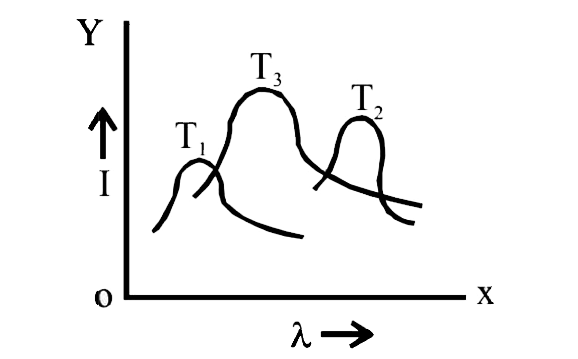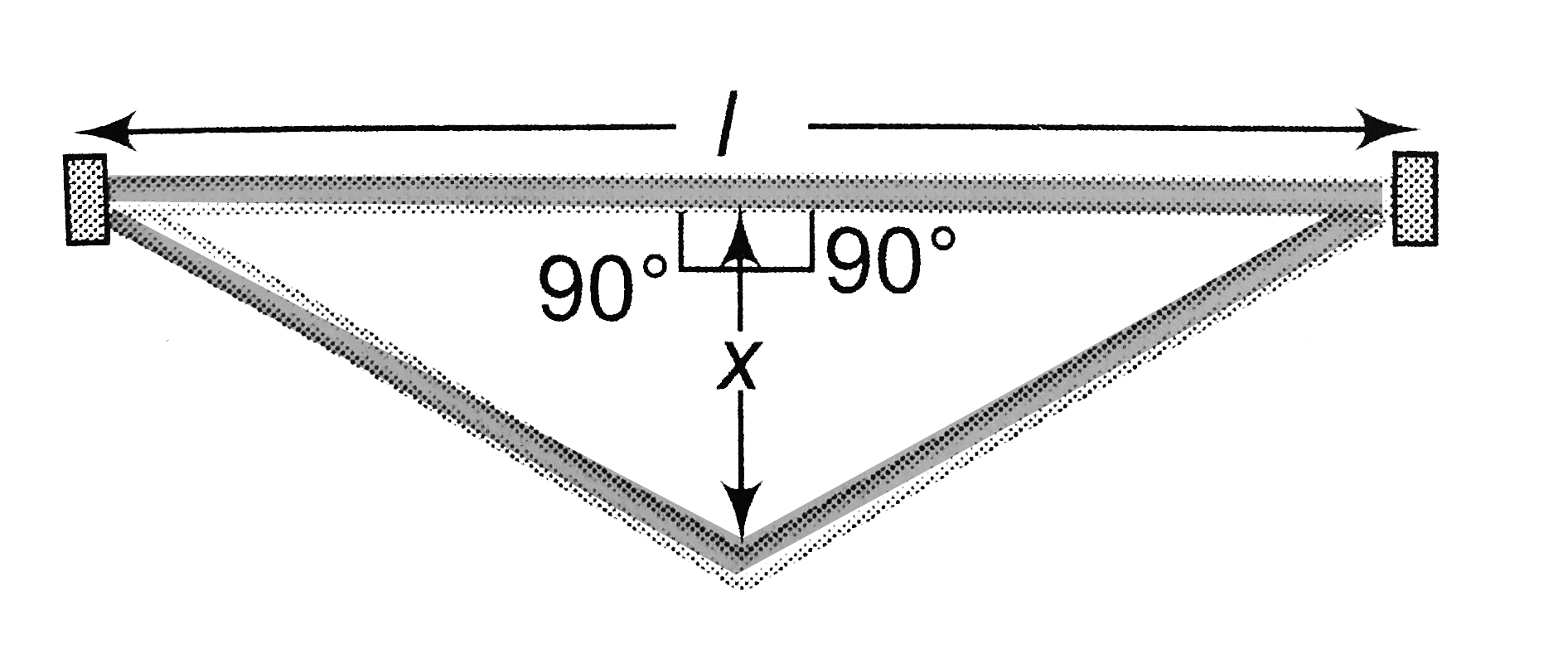Complete Solutions to Chapter Test of chapter THERMAL PROPERTIES OF MATTER of Class 11 book with complete answers and questions
| Class 11 | PHYSICS |
| Chapter | THERMAL PROPERTIES OF MATTER |
| A2Z | Chapter Test |
| Number Of Questions | 30 |
| Academic Year | 2023-24 |
If mass-energy equivalence is taken into account, when water is cooled to from ice, the mass of water should
00:42View SolutionAmount of heat required to raise the temperature of a body through `1 K` is called its.
01:31View SolutionA lead bullet just melts when stopped by an obstacle. Assuming that 25 per cent of the heat is absorbed by the obstacle, find the velocity of the bullet if its initial temperature is `27^@C` . (Melting point of lead `= 327^@C`, specific heat of lead `=0.03 cal//g.^@C`, latent heat of fusion of lead `=6 cal//g, J = 4.2 J//cal`).
03:04View SolutionTwo metal strips that constitue a thermostat must necessarily differ in their
02:26View SolutionA substance of mass M kg requires a power input of P wants to remain in the molten state at its melting point. When the power source is turned off, the sample completely solidifies in time t seconds. The latent heat of fusion of the substance is …….
02:52View SolutionSteam at `100^@C` is passed into 1.1 kg of water contained in a calorimeter of water equivalent 0.02 kg at `15^@C`till the temperature of the calorimeter and its contents rises to `80^@C` . The mass of the steam condensed in kilogram is
03:47View SolutionA block of ice at `-10^@C` is slowly heated and converted to steam at `100^@C.` Which of the following curves represents the phenomenon qualitatively?
02:05View SolutionTwo rods, one of aluminium and the other made of steel, having initial length `l_1 and l_2` are connected together to from a single rod of length `l_1+l_2.` The coefficients of linear expansion for aluminium and steel are `alpha_a and alpha_s` and respectively. If the length of each rod increases by the same amount when their temperature are raised by `t^0C,` then find the ratio `l_1//(l_1+l_2)`
02:56View Solution2kg of ice at `20^@C` is mixed with 5kg of water at `20^@C` in an insulating vessel having a negligible heat capacity. Calculate the final mass of water remaining in the container. It is given that the specific heats of water & ice are `1kcal//kg//^@C` and `0.5`
`kcal//kg//^@C` while the latent heat of fusion of ice is `80kcal//kg`05:52View SolutionWater of volume 2 litre in a container is heated with a coil of `1kW at 27^@C.` The lid of the container is open and energy dissipates at rate of `160J//s.` In how much time temperature will rise from `27^@C to 77^@C` Given specific heat of water is
`[4.2kJ//kg`]03:51View SolutionAccording to Newton's law of cooling, the rate of cooling of a body is proportional to `(Delta theta)^n`, where `Delta theta` is the difference of the temperature of the body and the surroundings, and n is equal to
00:58View SolutionIf the temperature of the sun were to increase form T to 2T and its radius from R to 2R, then the ratio of the radiant energy received on earth to what it was previously will be
02:07View SolutionThe temperature of the two outer surfaces of a composite slab consisting of two materials having coefficient of thermal conductivity K and 2K and thickness x and 4x respectively are `T_2` and `T_1(T_2gtT_1)`. The rate of heat transfer through the slab in steady state is `((AK(T_2 -T_1))/x)f`. where, f is equal to
 .02:51View Solution
.02:51View SolutionA sphere a cube and thin circular plate, all made of the same material and having the same mass are initially heated to a temperature of `1000^(@)C`. Which one of these will cool first?
02:33View SolutionA slab consists of two parallel layers of copper and brass of the time thickness and having thermal conductivities in the ratio `1:4`. If the free face of brass is at `35^(@)C` and that of copper at `1: sqrt(2.5)`, the temperature of interface is
02:16View SolutionA solid copper sphere (density rho and specific heat c) of radius r at an initial temperature `200K` is suspended inside a chamber whose walls are at almost `0K.` The time required for the temperature of the sphere to drop to 100K is …….
09:23View SolutionTwo metallic spheres `S_1 and S_2` are made of the same material and have got identical surface finish. The mass of `S_1` is thrice that of `S_2`. Both the spheres are heated to the same high temperature and placed in the same room having lower temperature but are thermally insulated from each other. the ratio of the initial rate of cooling of `S_1` to that of `S_2` is
`(a)1/3 (b)1/(sqrt3) (c) (sqrt3)/1 (d) (1/3)^(1/3)`03:22View SolutionThree rods of identical cross-sectional area and made from the same metal from the sides of an isosceles triangle ABC, right-angled at B. The point A and B are maintained at temperatures T and `sqrt(2)` T respectively. In the steady state, the temperature of the point C is `T_c.` Assuming that only heat conduction takes places, `T_c//T` is
04:59View SolutionTwo metal cubes A and B of same size are arranged as shown in Figure. The extreme ends of the combination are maintained at the indicated temperatures. The arrangement is thermally insulated. The coefficients of thermal conductivity of A and B are `300W//m ^@C and 200 W//m^@C,` respectively. After steady state is reached the temperature t of the interface will be ......
 03:38View Solution
03:38View SolutionThe intensity of radiation emitted by the sun has its maximum value at a wavelength of 510 nm and that emitted by the North star has the maximum value at 350 nm. If these stars behave like black bodies, then the ratio of the surface temperatures of the sun and the north star is
01:45View SolutionA spherical black body with a radius of 12 cm radiates 450 W power at 500 K. If the radius were halved and the temperature doubled, the power radiated in watt would be
02:38View SolutionA black body is at a temperature of `5760 K`. The energy of radiation emitted by the body at wavelength `250 nm` is `U_(1)` at wavelength `500 nm` is `U_(2)` and that at `1000 nm` is `U_(3)`. Wien's consant, `b = 2.88 xx 10^(6) nmK`. Which of the following is correct?
02:47View SolutionThe plots of intensity versus wavelength for three black bodies at temperature `T_1,T_2 and T_3` respectively are as shown. Their temperatures are such that
 02:04View Solution
02:04View SolutionAn ideal Black-body at room temperature is thrown into a furnace. It is observed that
01:41View SolutionFigure shows three temperature scales with the freezing and boiling point of water indicated. A change of `25^(@) R, 25^(@) S and 25^(@) U` is denoted by `x_(1), x_(2), x_(3)` respectively. Which of the following is correct?
 03:17View Solution
03:17View SolutionA composite bar of length `L = L_(1) + L_(2)` is made up from a rod of material `1` and of length `L_(1)` attached to a rod of material `2` and of length `L_(2)` as shown. If `alpha_(1)` and `alpha_(2)` are their respective coefficient of linear expansion, then equivalent coefficient of linear expansion for the composite rod is
02:08View SolutionA rail track made of steel having length `10 m` is clamped on a railway line at its two end (figure). On a summer day due to rise in temperatue by `20^(@)C`. It is deformed as shown in figure. Find `x` (displacement of the centre) if `alpha_("steel") = 1.2 xx 10^(-5)//^(@)C`
 04:42View Solution
04:42View SolutionAssertion: According to Newton's law of cooling, the rate of loss of heat, `-dQ//dt` of the body is directly proportional to the difference of temperature.
Reason :This law holds for all type of temperature differences.01:12View SolutionAssertion : In change of state from solid to liquid the temperature decreases untill the entire amount of the solid subtance melts.
Reason : The phenomenon of refreezing is called melting01:51View SolutionAssertion : A change in the temperature of a body cause change in dimentions.
Reason : The dimentions of a body decrease due to the increase in its temperature.01:09View Solution
Chapter Test questions and complete solutions for chapter THERMAL PROPERTIES OF MATTER of A2Z PHYSICS (HINGLISH) of Class 11
